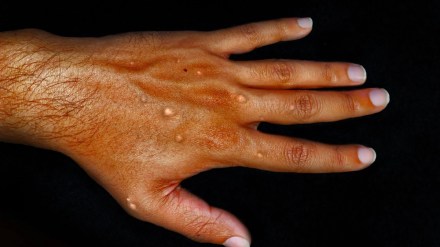The WHO last week sounded its highest level of alert over the outbreak of mpox in Africa. With cases reported in Sweden and Pakistan, Banasree Purkayastha looks at what is driving the current concern and whether India needs to be worried
l What is the mpox disease
Mpox, caused by the monkeypox virus, leads to flu-like symptoms and pus-filled lesions. It is usually mild but can kill, with children, pregnant women and people with weakened immune systems, such as those with HIV, all at higher risk of complications. There are two clades, or genetic groups, of mpox: Clade I, predominantly found in Central and East Africa, and Clade II, which is associated with more cases in West Africa. Clade I of mpox is associated with more severe illness and higher fatality rates than Clade II, which was widespread during the 2022 outbreak that affected Europe and North America. Clade I also appears to affect children more.
Caused by an Orthopoxvirus, mpox was first detected in humans in 1970, in the Democratic Republic of Congo. The disease is considered endemic to countries in central and west Africa. Neglected there, it later caused a global outbreak in 2022.
The current upsurge of mpox in parts of Africa, along with the spread of a new sexually transmissible strain, is thus an emergency, not only for Africa, but for the world.
l Why has the WHO red-flagged it?
Per the WHO, there was a rapid spread of a new mpox strain in Congo last year called “Clade 1b”, which appears to be spreading mainly through sexual networks, and its detection across West, Central, and East African countries neighbouring Congo, the epicentre of the outbreak, is especially concerning, and one of the main reasons for the declaration of a new PHEIC.
WHO anticipates an immediate funding requirement of an initial US$ 15 million to support surveillance, preparedness and response activities. The regional response plan aims to enhance surveillance, ensure vaccine availability, and provide necessary support to affected countries. In 2022, a WHO appeal for $34 million to fight mpox did not get much response from donors. African countries had no access to the two shots used in the global outbreak, made by Bavarian Nordic and KM Biologics. Two years later that remains the case, although there are efforts to change that, the WHO said as it appealed for dose donations from countries with stockpiles. However, it has advised against any travel restrictions.
l Cases recorded worldwide
There have been more than 14,000 cases and 524 deaths in Africa this year, which already exceed last year’s figures, as per WHO. More than 96% of all cases and deaths have been in Congo. There have been 27,000 cases and more than 1,100 deaths, mainly among children, in Congo since the current outbreak began in January 2023.
Sweden reported the first case outside Africa on August 15 in a person who was infected during a stay in a part of Africa affected by the outbreak. The European Centre for Disease Prevention and Control (ECDC) expects cases of infection to surge this week.
Pakistan last Friday reported one confirmed case in a man who had recently returned from the United Arab Emirates (UAE) and two more suspected cases. The UAE has had 16 confirmed cases of mpox since 2022, according to the WHO. The UAE is particularly affected by transnational outbreaks given its role as a hub connecting the eastern and the western parts of the world.
l Treatment and vaccination
The goal of treating mpox is to take care of the rash, manage pain and prevent complications, and also prevent it spreading to others. The preferred laboratory test for mpox is the detection of viral DNA using polymerase chain reaction (PCR). Getting an mpox vaccine can help prevent infection, but this is recommended only for high-risk individuals. Several antivirals, such as tecovirimat, originally developed to treat smallpox have been used to treat mpox and further studies are underway.
Danish biotech Bavarian Nordic has submitted data to the European Union’s drug regulator for approval to extend the use of the company’s mpox and smallpox vaccine to adolescents aged 12-17 years. It is also preparing to conduct a clinical trial to assess the vaccine’s safety in children aged 2-12 years, potentially extending its use further. The trial, partially funded by the Coalition for Epidemic Preparedness Innovations, is scheduled to start in the Democratic Republic of Congo and Uganda later this year.
l Is India prepared to handle any health emergency?
During the 2022 global outbreak, India had reported 30 cases of mpox, with the last case being recorded in March 2024. At that time, the health ministry had issued guidelines on management of monkeypox disease, as it was called then.
Late last week, the health ministry said that the risk of a large outbreak with sustained transmission is presently low for India, although the possibility of a few imported cases being detected in the coming weeks is not entirely ruled out. It has said that health units at airports, seaports, and ground crossings are being sensitised, and 32 laboratories will be ready along with the health facilities for detecting, isolating, and managing cases of mpox.
Also, India may not have to worry much given that the smallpox vaccine is the first line of defence, and a large chunk of the population has been vaccinated against smallpox (it was eradicated in India in 1977).
